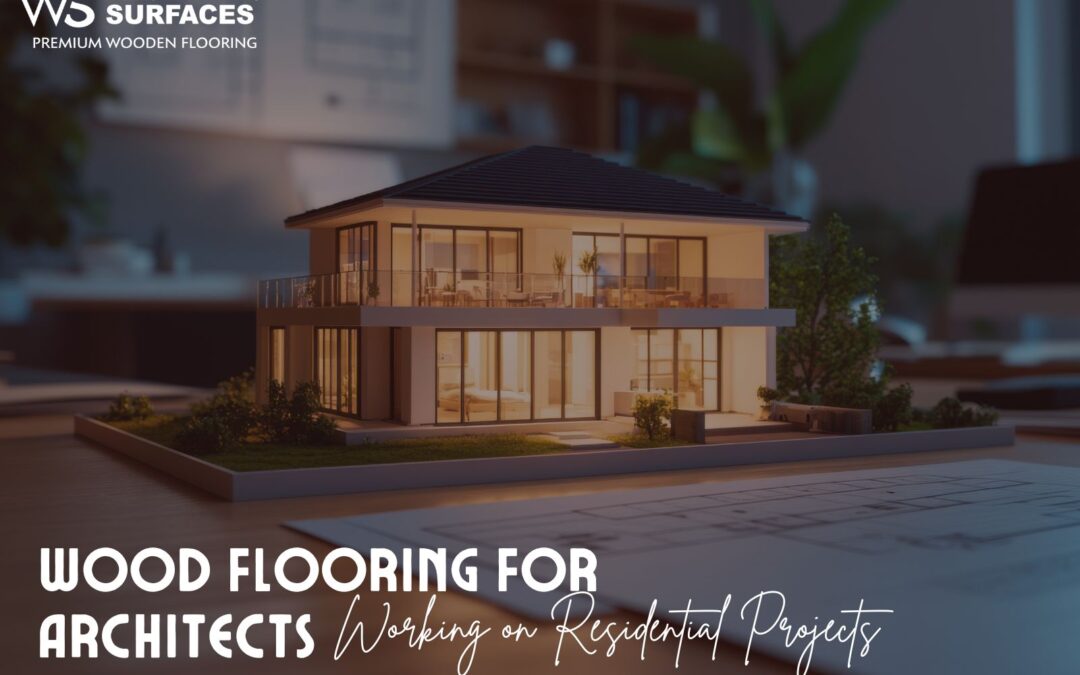When architects design living spaces, every material they choose becomes part of a much larger story. Walls may hold the structure, and windows let in the light, but the floor carries the daily rhythm of the people who call that place home. Among all flooring materials, wood flooring for architects often stands out as more than just a design decision—it becomes a foundation of atmosphere, durability, and lifestyle.
Why Wood Flooring Appeals to Architects in Residential Spaces
Residential projects are not only about form; they are about creating a sense of belonging. Residential wooden floor offers that rare ability to bring warmth and grounding to interiors without overshadowing other design elements. The material adapts to both minimal modern layouts and richly layered traditional homes. Its versatility means architects can keep design intentions intact while ensuring comfort underfoot.
What makes wooden floor especially appealing in residential design is how it ages. Unlike many synthetic materials that begin to show wear quickly, wooden planks often develop character over time. This natural evolution connects with the human instinct to see beauty in imperfection, an aesthetic architects frequently value.
Choosing the Best Wood Flooring for Homes
The decision to select the best wooden flooring for homes is not a straightforward one. It involves more than choosing between oak, walnut, or ash. Architects must evaluate grain patterns, plank sizes, surface finishes, and even the acoustics of a room. A large, open-plan living area, for example, benefits from wider planks that reduce visual clutter, while smaller rooms may call for narrower planks that add scale and depth.
Another consideration is sustainability. Many homeowners now expect architects to align their design choices with eco-friendly practices. Responsible sourcing of wood, use of certified materials, and finishes that minimize environmental impact all contribute to flooring choices that respect both design integrity and ecological responsibility.
The Collaboration Between Architects and Flooring Specialists
The architectural vision is only as strong as the craft that brings it to life. Partnering with a reliable Wood Flooring Company ensures that technical specifications are met without compromise. A company specializing in wooden flooring not only supplies materials but also guides architects on installation methods, long-term maintenance, and the performance of various finishes in different residential contexts.
In residential projects, the smallest detail—a beveled edge, the angle of sunlight hitting a matte finish, or even the way a staircase transitions into a hallway—matters immensely. This is where the expertise of a Wooden Flooring Supplier becomes invaluable. Suppliers often provide product samples, testing options, and technical support, enabling architects to ground their ideas in practical solutions.
Wood Flooring as a Design Narrative
When used thoughtfully, wooden floor can do more than simply provide a walking surface. It can create continuity between rooms, mark zones within open layouts, or add contrast against furniture and wall treatments. Some architects even treat the floor as a canvas, experimenting with parquet patterns or herringbone layouts to give character to an otherwise simple design.
This narrative quality means wood flooring can play an active role in residential storytelling. Each plank represents not just material but history—whether reclaimed wood from an old building or newly milled boards designed to last for generations. Such choices reinforce the idea that architecture is as much about memory as it is about function.
Practical Considerations for Residential Wood Flooring
For architects, balancing creativity with practicality is essential. While wood floor is undeniably beautiful, it must also withstand daily life: children playing, pets running, furniture being moved, and constant foot traffic. Finishes that resist scratches, surfaces that remain stable in fluctuating humidity, and installation methods that allow for natural expansion all play critical roles in ensuring long-term performance.
Furthermore, architects need to communicate maintenance requirements to clients clearly. A family expecting a low-maintenance lifestyle will need different recommendations than one that enjoys caring for and polishing their wood surfaces. Choosing the right finish—oil, lacquer, or matte polyurethane—can make all the difference in meeting client expectations.
Why Architects Return to Wood Flooring Again and Again
Although engineered composites, luxury vinyl, and other modern materials are gaining popularity, wood continues to hold its place as the preferred option in residential projects. Its natural texture connects the human senses with the built environment, creating interiors that feel alive rather than manufactured. This enduring appeal explains why architects return to it repeatedly, finding new ways to interpret old traditions.
Ultimately, working with the right Wood Flooring Company or flooring supplier provides architects with not just materials but confidence. The right partnerships ensure that designs on paper become living spaces where families create memories, grounded by the warmth and strength of wood underfoot.
Conclusion
Wooden floors are not just about picking a surface for architects; it is about shaping the experience of home itself. For small homes or wide-open residences alike, wooden floors deliver sturdiness, environmental benefits, and timeless sophistication. For architects, they remain one of the most reliable and inspiring materials in residential design—bridging the gap between functional necessity and aesthetic poetry.

